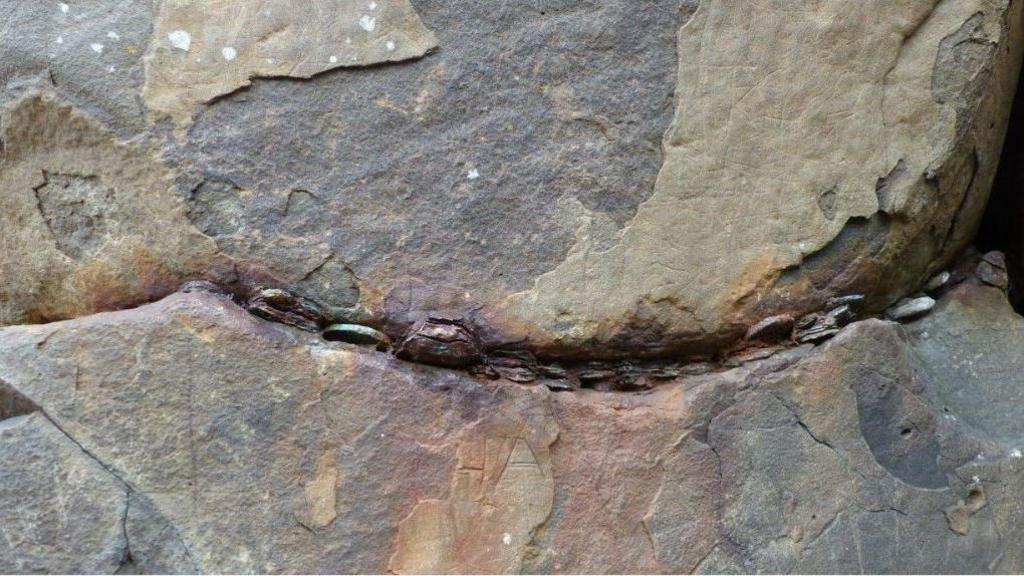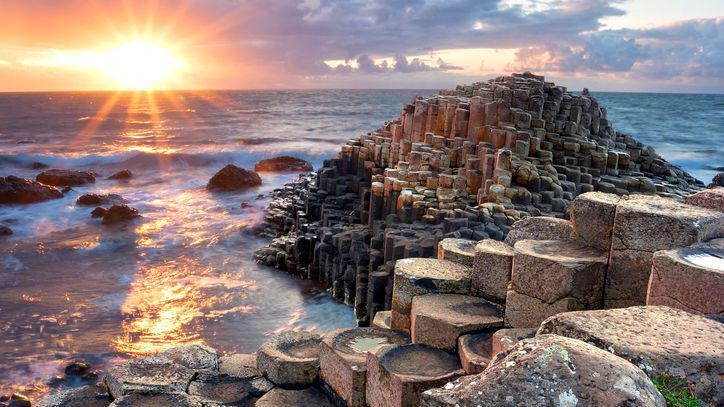Tourists asked not to wedge coins into famous Northern Ireland rocks
How 'lucky coin' tradition is damaging the Giant's Causeway
- Published
Have you ever thrown money for good luck or to make a wish?
Well, tourists at one landmark in Northern Ireland are being urged to keep their spare change in their pockets.
Visitors to the Giant's Causeway in Northern Ireland have been asked not to wedge coins between the famous stones.
The National Trust, which looks after the site, says the coins left between the basalt columns expand and rust, damaging the rock.
More like this
- Published27 May
- Published21 May
What's happened?

Over time the coins rust and change the colour of the rock
The Giant's Causeway is one of Northern Ireland's most famous and important landmarks, with hundreds of thousands of people visiting the site each year.
The practice of jamming coins into the rocks started many years ago – but the National Trust believes it has increased significantly in the past decade.
They say that the coins quickly rust and expand, which causes the rock to flake, and it also leaves reddish-brown coloured streaks.
A trial to remove coins safely has been successful, and now it is hoped the money - which comes from all over the world – will be removed across the causeway.
However, the tidy-up operation is expected to cost more than £30,000 to remove them all.
Dr Cliff Henry, from the National Trust, said the rocks are affected in many ways.
He explained: "People see others put coins in, so they copycat, they take a coin out of their pocket and they might take a stone off the ground to hammer the coin in.
"But they might miss and chip the stone itself so that's doing damage."
According to the Trust, signs will be put up around the site, and visitors will be warned not to insert the coins by tour guides.
What is the Giant's Causeway?

Giant's Causeway is located in County Antrim in Northern Ireland.
It was formed around 60 million years ago when volcanic eruptions created 40,000 basalt stone columns.
As the ancient lava cooled, the stones formed into six-sided shaped patterns called hexagons.
Legend has it that it was actually an Irish giant called Finn McCool who created the causeway to prove how strong he was to Benandonner, a rival Scottish giant across the water.
Giant's Causeway is a Unesco World Heritage Site which means it has cultural, historical and scientific importance.
